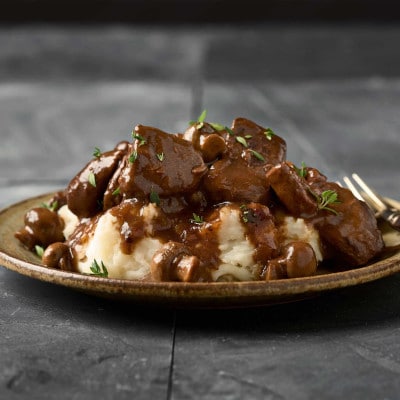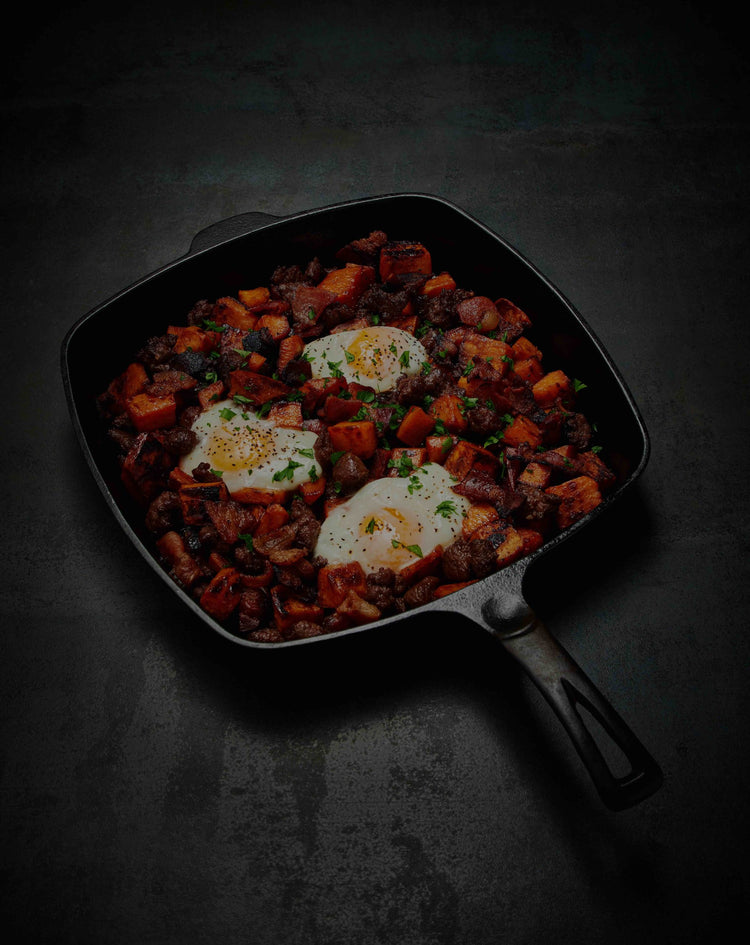Front shoulders on any wild game can be tricky to cook depending on how the animal was hunted. This meat on most wild game species lines the animal’s scapula, which is a natural armor covering vital organs and muscle tissue. Sometimes when hunting with an arrow, we cannot avoid shooting through, or making contact with it. This can lower our overall yield of meat harvested from an animal – which in turn can make cooking a little more difficult.
I’ve always thought of front shoulders as burger meat, or a shank dinner, but I’ve now become sold on the idea of turning the shoulder and entire leg (usually from my deer or antelope harvests) into a Latin cuisine staple: tamales.
This recipe is broken into three major parts: the barbacoa, the filling, and the masa. All are dependent on each other, so every ingredient and step is crucial to the final product.
This recipe is a modified version of Hank Shaw’s original recipe created a few years ago. Check out the original recipe for the barbacoa and tamales here.
THE BARBACOA
- We prefer to use the front shoulder of our harvests because of the size and ease of space in the kitchen. In this recipe, I used the front shoulders of my first Coues buck that I was fortunate to harvest this winter.
- It starts with a very clean front shoulder with as much grey skin removed as possible. A sharp 8” filet knife works wonders in the process. We use a braising method on the shoulder to break down and tenderize the meat. We only used the shoulder because I have a recipe that’s great for solo shanks, and if you omit them here, you’ll have more room in the braising pot for more shoulder.
- The longer you braise the meat, the more tender it will be. We cooked ours at 300°F for 5-6 hours. You’ll know it’s ready when the meat falls off the bone.
- When you strain the braising liquid from the meat, save it all. You’ll need the braise for the filling and for the masa, so don’t throw any out! If you don’t have enough for the masa and filling (even after saving it) you can use beef broth or stock.
THE FILLING
- Rehydrating the peppers can take longer than the recipe stipulates, so give yourself plenty of time to make sure they’re completely soft so they puree well. If your chilis aren’t soft enough, you’ll end up with big chunks of pepper when you stir the puree into the barbacoa.
- We’d recommend adding a good 20-30 minutes onto the prescribed 10 minutes of soaking (under “Make the filling” in the recipe instructions). If you need to add more water or broth to keep the chilis covered in liquid, go ahead!
THE MASA
- Rehydrate your peppers completely. See note on peppers above.
- Make sure to read Mr. Shaw’s “Notes” section, especially the section about the masa harina, if you can’t find fresh masa. (we usually can’t) You need 5 cups of braising liquid (or warm broth/water) for every 6 cups of masa, this is why it’s crucial to save all of that braise!
- Don’t use too much masa! Too much is the kiss of death in the judgement of a fine tamale and we don’t recommend the masa to be more than ⅓ of the entire tamale. This is how you keep that dryness of the steamed cornmeal from turning into what feels like a mouthful of sawdust, and you need a solid base of meat filling that can keep the tamales honest! Start with the “less is more” concept, than adjust accordingly.
SIDE NOTES
- We love cheese. All are welcome in these tamales, so shoot for the moon! Blend up an assortment, and finish with a small handful of cheese on top of the meat filling before the wrap process. The cheese is going to steam itself into the cracks and crevices of the meat and filling.
- We love to lay some Hatch Green Chiles over the top of the filling just before laying out the shredded cheese, it’s fantastic!
- This recipe makes about 35-40 tamales, depending on how much masa/filling you can fit in each corn husk. We like to at least double the recipe, but have gone as far as quadrupling it.
- Your typical tamale is usually ⅓ meat to ⅔ masa, but we believe the best tamale has the opposite ratio of ⅓ masa to ⅔ meat filling, in addition to the perfect amount of moisture and flavor in the masa itself.
PREPARE
MAKES 8 SERVINGS
BARBACOA |
FILLING |
| 2 to 3 pounds venison | 2 pounds braised, shredded venison |
| 2 to 4 chipotles in adobo, canned | 6 ancho chiles, seeded and torn up |
| 1 red onion, chopped | 6 guajillo chiles, seeded and torn up |
| 5 garlic cloves, chopped | 5 cloves garlic, chopped |
| 2 bay leaves | 2 cups braising liquid from venison |
| 1 teaspoon smoked paprika | 1 teaspoon dried oregano, Mexican if possible |
| 1 teaspoon ground cumin | 1 teaspoon cumin |
| 1 teaspoon ground cloves | 30 to 40 corn husks, soaked in hot water |
| 1 tablespoon kosher salt | |
| ½ cup lime juice | |
| ½ cup cider vinegar | |
| 1 quart beef or venison stock | |
| 1/4 cup lard or vegetable oil | |
| Smoked salt, pinch | |
| Cilantro, shredded cheese, sour cream, avocados and hot sauce for garnish | |
MASA |
|
| 1 tablespoon baking powder |
|
| 2 1/4 pounds masa |
|
| 10 1/2 ounces fresh rendered lard |
|
| 6 cloves garlic, chopped |
|
| 4 guajillo or ancho chiles, seeded and torn up |
|
| 1/4 cup braising liquid from venison |
|
| 2 teaspoons salt |
|
Get Cooking
BARBACOA
- Put everything in a slow cooker or Dutch oven and cook, covered, until the meat falls off the bone, which will be between 2 hours (for many domestic meats and young deer) and 6 hours if you have a very old animal. If you use a slow cooker, set it to “high.” If you use a regular pot, put it into the oven set to 300°F.
- Pull all the meat from the bones and shred with forks or your fingers. Stir in the lard and as much smoked salt as you want. You want the lard or oil to coat the shreds of meat. Pour over some of the juices from the pot and put the meat in a pan for the table.
FILLING & MASA
- Make the masa. Cook the chiles and garlic in the braising liquid until limp, then puree into a paste in a blender. Add this to the fresh masa, lard, salt and baking powder and knead until cohesive. (See note below on fresh masa)
- Make the filling. Saute the garlic with the torn up chiles in a little lard until fragrant. Cover with water or braising liquid from the venison and simmer until soft, about 10 minutes. Puree in a blender. Mix this with the spices and herbs and the shredded venison.
- Spread the dough. Place the corn husk wide side away from you. Smear some masa dough in the center of the husk, about 1/4 inch thick or less. Leave 2 to 4 inches room on the top and bottom of the husk, and about an inch or so on the sides.
- Fill the tamales. Add about a tablespoon of the venison filling to the center of the spread-out dough. Leave enough space around the dough so you’ll be able to fold the tamal over.
- Fold the tamales. Fold the tamal over sideways, touching the ends of the dough together. Usually the easiest way to do this is to fold the husk itself over. Tuck one end of the husk over the tamal, then roll the husk over to form a cylinder. Fold up the bottom to seal. If you want, tie the tamal with some string or strips of corn husk.
- Steam the tamales. Set up your steamer. This should be a tall, large pot with a vegetable steamers set inside. it. Pour in enough water to just barely touch the base of the steamer. Line the steamer with a few spare corn husks. Set each finished tamal, open side up, into the steamer. When they’re all in, cover the pot and steam for at least 1 hour, and up to 80 minutes.
- Serve the tamales. When they’re ready, unwrap the tamales and serve with a sauce and some onions that have been soaked in lime juice for an hour or so.







